Illinois lawmakers this week approved and Gov. Bruce Rauner today signed into law Senate Bill 1947, which modernizes the state’s education funding formula and introduces a five-year Scholarship Tax Credit.
This new program offers access to a quality education for low-income and working-class students across the state at Catholic and other private schools. The Catholic Conference has put together a fact sheet on the new program, which is below and can be found here in a PDF.
What is a Scholarship Tax Credit program?
It allows individuals and corporations to donate to scholarship granting organizations (SGO) and receive a credit on their state taxes in return. These organizations will then use this money to grant scholarships to qualifying students.
How much is the credit worth?
An individual or corporate donor will receive a 75 percent credit on their donation. This means that if a donor donates $10,000, they will receive a state tax credit of $7,500.
Donations by both individual and corporate donors are capped at $1 million.
Individual donors can direct their donations to the school or subset of schools of their choice. Corporate donors cannot designate.
The credit is non-refundable, but it can be carried forward for five years.
Can a donor receive a federal tax deduction in addition to a state tax credit for the same donation?
No. The legislation specifically prohibits this.
Is there a program cap? If so, what is it?
Yes, there is a cap. It is $75 million per year.
The cap indicates the amount of tax credits that can be handed out; it does not cap the amount of scholarships that can be distributed under the program.
In order for the $75 million cap to be hit, $100 million will have to be donated.
How does that donation process work?
Beginning on January 1, 2018, individual and corporate donors will be able to reserve tax credits on an Illinois Department of Revenue website.
They will then have 60 days to donate the amount they reserved to the SGO of their choice. After donating, they will receive a certificate of receipt from the SGO, indicating that a donation was made. The SGO will then notify the Department of Revenue that a donation was made.
If a donor doesn’t donate, rescinds their donation, or gives less than they indicated to the Department of Revenue, they will not receive ANY tax credit.
All unused tax credits will be put back into the program until the cap is hit.
What is an SGO?
An SGO is a 501c3 non-profit organization whose primary aim is to give scholarships to students.
What are SGO regulations?
An SGO must be approved by the Department of Revenue before donors can receive a tax credit for donating to it.
An SGO must use at least 95 percent of donations during a taxable year for scholarships.
An SGO cannot be operated by an individual who has filed for individual or corporate bankruptcy in the last 7 years.
An SGO cannot be operated by an individual who owns or operates a school that participates in the program or who has a family member who is a paid staff or board member of a school that participates in the program.
An SGO must abide by federal anti-discrimination provisions.
An SGO must distribute at least 75 percent of money raised in the form of scholarships each school year.
An SGO must only give scholarships to eligible students attending participating schools.
Who qualifies for scholarships?
Initially, students whose families earn 300 percent of the federal poverty level (FPL) or less ($73,800 for a family of 4). Once a student receives a scholarship, his or her family can earn up to 400 percent of the federal poverty level ($98,400 for a family of 4).
From January 1 to April 1, priority will be given to students from each of the following categories:
- Students who received a scholarship from an SGO during the previous school year;
- Students who are members of a household whose previous year’s total annual income does not exceed 185% of the federal poverty level ($45,510 for a family of 4);
- Students who reside within a focus district; and
- Students who are siblings of students currently receiving a scholarship.
After April 1, all other qualifying students will be able to receive scholarships.
Will all scholarships go to Chicago?
No. There is a requirement in the new law that the Department of Revenue ensure distribution of scholarships throughout the entire state.
How does an SGO determine the size of a scholarship a student receives?
In order to qualify for a scholarship, a student’s family will have to give official documentation to the SGO of their ability to pay.
Based on how a student’s household income compares to the federal poverty level, a student will receive the following:
- For students whose household income is less than 185 percent of FPL, the scholarship will be 100 percent of tuition and necessary fees;
- For students whose household income is between 185 percent and 250 percent of FPL, scholarships will average 75 percent of tuition and necessary fees; and
- For students whose household income is above 250 percent of FPL, scholarships will average 50 percent of tuition and necessary fees.
What is the maximum amount of scholarship a student can receive?
Tuition and necessary fees of the school to be attended or the statewide average operating expense per student, whichever is lower.
For the current year of 2017, the statewide average operating expense per student is $12,280.
Students identified as gifted and talented can receive a maximum scholarship amount of 1.1 times the statewide average operating expense, or $13,508.
Students identified as English Language Learners can receive a maximum scholarship amount of 1.2 times the statewide average operating expense, or $14,736.
Students identified as eligible to receive services under the federal Individuals with Disabilities Education Act can receive a maximum scholarship amount of 2 times the statewide average operating expense, or $24,560.
How will it be determined whether students are benefiting from this program?
All students who receive scholarships will be required to take the state assessment.
The Illinois State Board of Education will select an independent research organization to conduct an annual study examining the year-to-year learning gains of students receiving scholarships and a comparison of these learning gains to public school students with similar demographic backgrounds.

